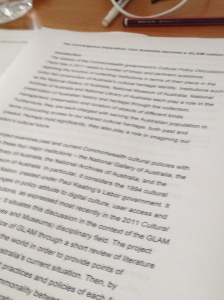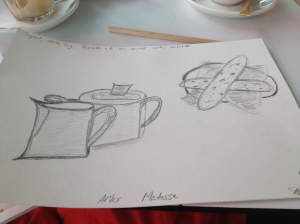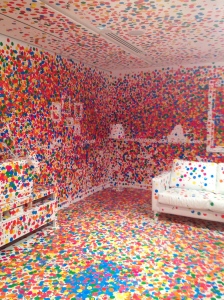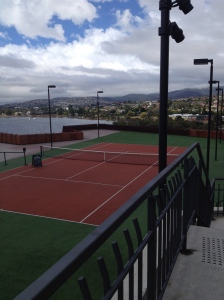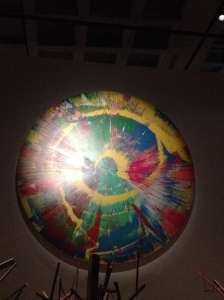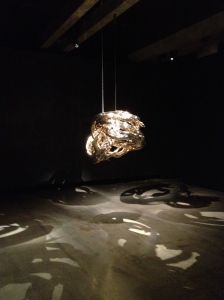I have made a start. Congratulations to me. So far I have managed an outline and a skeleton framework. This is not my usual way of writing. Usually I just sort of start and shape the piece of writing organically. This is not always successful, but I discovered when completing my thesis that I could make all the plans in the world and then as soon as I started writing, the plan went out the window as everything went off in different directions.
With this project I am trying very hard to stick to a plan – for the first draft at least. Then, comes the part that I don’t mind as much as the first draft. I actually quite enjoying picking apart a complete piece of writing and putting in back together, filling in gaps, ruthlessly slashing and burning different sections. Perhaps that is part of being a shaper as well.
So here I am up to what is probably the crucial section of the project – where I discuss exactly what GLAMS (or LAMS depending on what you are reading) is all about. What are its key principles? How did it develop? What is the connection to Web 2.0 technologies? I have quite a number of articles and papers which talk about the points of commonality between Libraries, Archives and Museums in the world of information technology. They talk about them as collecting or memory institutions. They talk about the importance of any collaborative project (or indeed convergence of such institutions) recognising both what such institutions have in common as well as what distinguishes them from each other. This is all fine. I understand that. What I have to be able to do is justify the “G” for Galleries. Because much of what I have read has left Galleries out of the picture – so to speak!
Thinking about it, I’m not sure why this is. They all collect things. Art, records, documents, objects. Often Museums have libraries and archives as part of their operation. Or Galleries might also have an archive or library of sorts. Of course each institution does different things with what it collects. It might exhibit it, it might preserve it and either store or display it, it might document it for easy retrieval, it might place it in historical context so it can be connected to other like records in order to identify cultural themes. It might do lots of other things as well. But I guess in the first instance, each institutions collects…it’s what happens next that distinguishes the role of the institution in our collective cultural heritage.
So when we add digitisation of collections into this mix, what happens? Is there where Galleries fall off the LAM? Surely not. A gallery can produce a digital collection based around certain exhibitions, themes or items in its collections just as easily as an Library, Archive or Museum. In each case, it is important to realise that the digital collection does not replace the physical collection. It becomes a new collection in and of itself. This is where concepts such as digital curation, preservation and archiving come into their own as the digital collection will have different imperatives and strategies in its formulating to a physical collection or exhibition. The various practices of digital collections across these institutions do in some sense level out the distinctions among them that characterised their traditional contexts. It does not, however, remove those distinctions completely. What digital technology does offer is the potential for GLAMs to collaborate across their differences in producing a different form of collection that can be searched and used online, providing greater (if different) kinds of access for participants to engage with it. Done well, this has the potential to create an addition to our heritage, collecting institutions that enriches our cultural life. So with this in mind, I think that the Galleries in GLAMs is vital.


